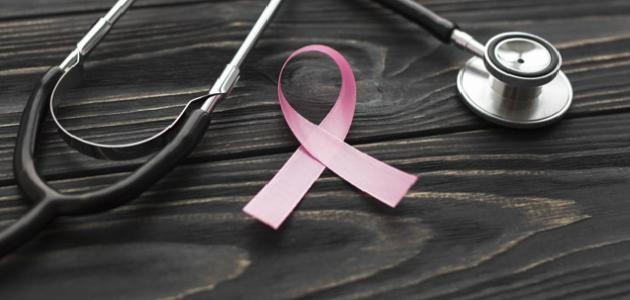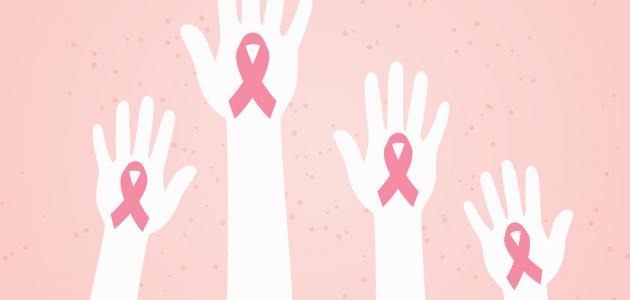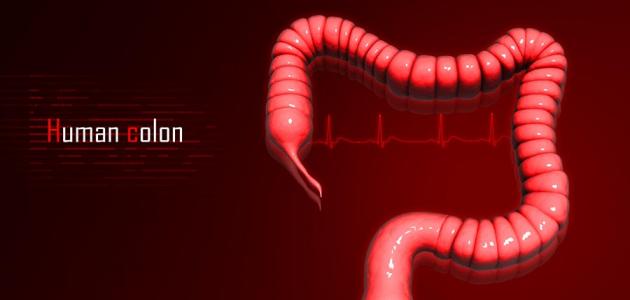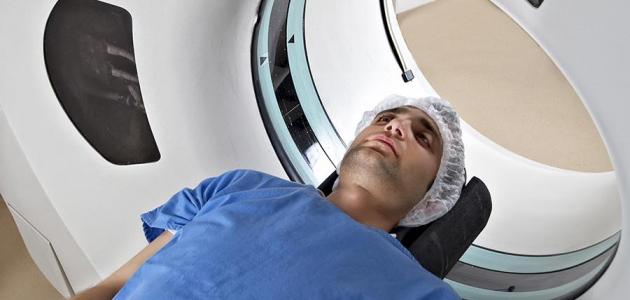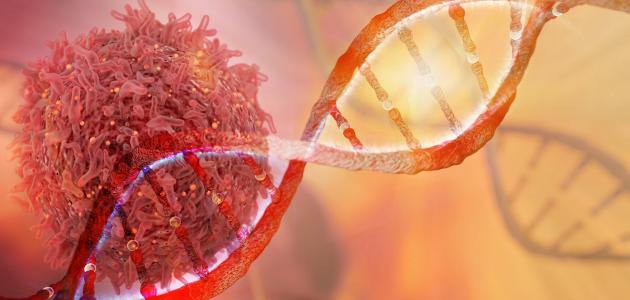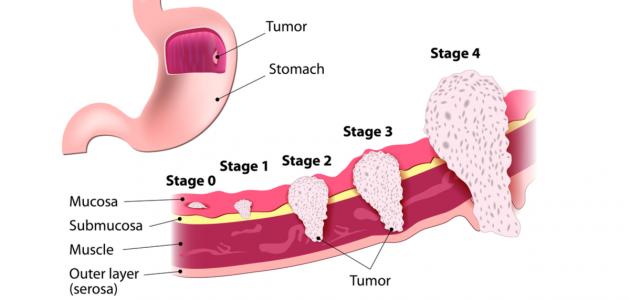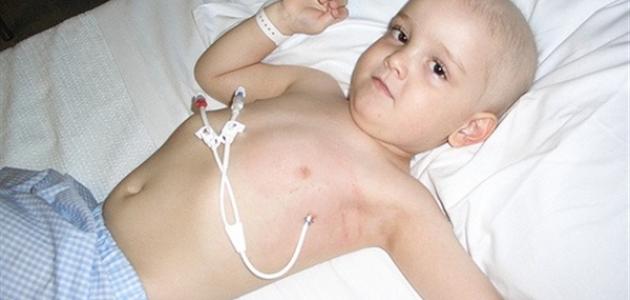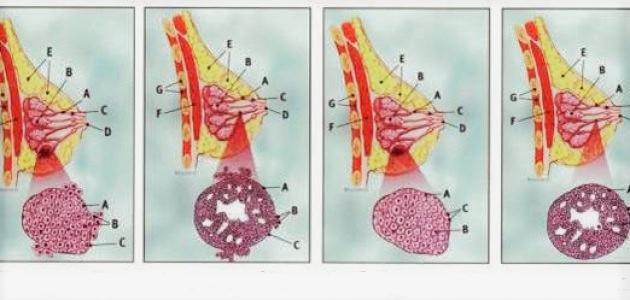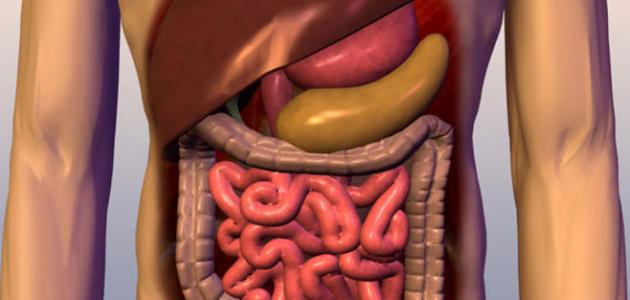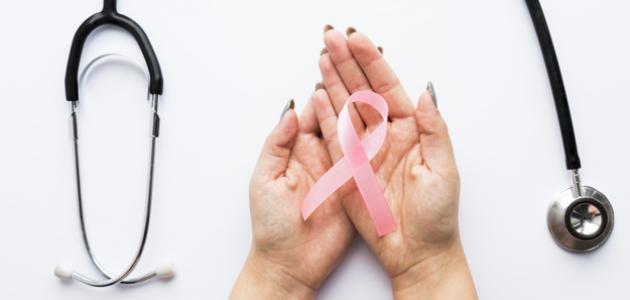Contents
Overview
The breast cancer A type of cancer that is made in the breast tissue, and although it affects women primarily, but it may also affect men, but it is so rare, [1] and supports prediction status in the future situation on cancer degree at Diagnosis; The more diagnosed breast cancer in its early stages, the better the control of the condition. [2]
To learn more about breast cancer, read the following article: ( What is breast cancer ) .
Despite the many available breast cancer treatments, they all aim to rid the body of the largest mass of cancerous tumors , reduce the likelihood of the cancer returning again, [3] and limit its spread to other parts of the body, and in several cases, certain treatments may be relied on to control Cancer, followed by a treatment strategy known as Adjuvent Therapy, which aims to limit the recurrence of cancer again, and in other cases, resort to certain treatment strategies known as Neo-adjuvent Therapy before starting the main treatment, In order to reduce the size of the tumor to facilitate its removal. [4]The fact that the best treatment for breast cancer is chosen based on the size and location of the tumor in the breast, in addition to a number of other factors. Including the results of laboratory tests performed on cancer cells, [5] which reveal the characteristics of the tumor in general; Including the nature of the receptors carried by cancer cells, such as carrying human epidermal growth factor receptor 2 and for short (HER2), or the progesterone receptor or estrogen ), [3]The doctor also depends in choosing the most appropriate type of treatment on the degree of infection, extent of cancer, age of the patient, and his general health, and after the final diagnosis, he determines whether the case will be treated with one or more of the treatment options available in several forms, which may be local . Or systemic. [5]
Topical treatments for breast cancer
Topical treatments aim to destroy and remove the tumor, or to control cancer cells in a specific site of the body. Like the breast, [5] accordingly , this type of treatment targets the same tumor without any effect in other parts of the body. [6]
Surgery
Surgery is the first option for treating breast cancer, and surgery is often followed by radiotherapy or chemotherapy, and in some cases hormonal or targeted therapies. [7] It is indicated that the type of surgery that will be performed depends on The type of breast cancer that the patient suffers from, and the desired goal of her procedure. The following is a statement of the most prominent goals of surgery: [8]
- Reducing symptoms of advanced stages of breast cancer.
- Removing the largest amount of cancer cells possible through a mastectomy or breast conserving surgery.
- Reconstructing the breast after removing the tumor with a surgical procedure known as Breast Reconstruction Surgery.
- Ensure that cancer does not spread to the lymph nodes under the arm, and in the event that it has spread, the lymph nodes are removed by two surgical procedures. These are Sentinel Lymph Node Biopsy or Axillary Lymph Node Dissection.
Lumpectomy
Lumpectomy is also known as breast conservative surgery or wide local excision, and this surgery is the best option for many women who suffer from breast cancer in the initial stages, as this surgery enables the affected woman to retain most of her breasts after Operation, lumpectomy is preferred in cases where the tumor is small. Large tumors may require prior chemotherapy in order to reduce the size of the tumor to facilitate its complete eradication through surgery, as the doctor removes the entire tumor with small parts of the healthy tissue surrounding it, and maintains an abundant amount of normal breast tissue during this surgery, and the removal of some Healthy tissues and lymph nodes based on many factors; Including the size and location of the tumor, and in most cases this surgical procedure follows the patient's subjection to radiotherapy.[9] [10]
Mastectomy
Mastectomy is the removal of the entire breast and its tissues, including the lobules, adipose tissue, ducts, and a portion of the skin; Including the nipple and the areola of the nipple , it is referred to the development of modern surgical techniques aimed at improving the external appearance of the breast when it is removed, and about the most common mastectomy surgeries, it is a mastectomy with skin-sparing mastectomy and excision The breast while retaining the nipple , and it is worth noting that the majority of cases in which one breast is affected by cancer but not the other does not result in the other breast being affected by cancer later, but some may choose to remove the other breast as a preventive measure, especially if they have Risk factors that increase the likelihood of developing breast cancer; As having a genetic predispositionOr a strong family history, and this is fully discussed with the attending physician before making a final decision, [9] and in this context it is indicated that most cases of mastectomy when developing breast cancer in its early stages do not require radiotherapy after breast removal, and in general it is necessary Radiation Oncologist advice to assess whether or not the case needs radiotherapy. [10]
Lymph node removal
The doctor removes a limited number of lymph nodes in what is known as sentinel node biopsy to find out whether the cancer has spread to the neighboring lymph nodes or not, it is necessary for the doctor to discuss with the patient the importance of removing the lymph nodes that are the first to receive the drainage of the lymph fluid . Of the tumor, and in the event that none of these nodes is proven to have cancer, the possibility of spreading it and reaching the distant lymph nodes is almost negligible, and therefore there is no need to remove more of them. For axillary node removal surgery, which aims to remove more lymph nodes in the armpit from the side of the injury. [11]
Adaptation to the consequences of surgery
Many women have different views of their bodies after breast cancer, so here we offer a number of tips regarding coping with the condition after the surgical procedure: [12]
- Giving yourself sufficient time to accept the diagnosis and agree to treatment; This is because the reality of cancer and the demand for treatment may change the life of the patient, and therefore, adaptation needs some time.
- Maintaining a calm soul and a cheerful spirit, and trying to laugh, because of its positive effects on the soul and body, and it also helps to relax in critical times.
- Inform the medical staff in charge of the case about the person's concerns about treatment; Like hair loss , the patient may resort to cutting his hair or shaving it completely, in a way that makes him feel in control of his condition and thus reduces his feeling of fear.
- Talking with others who have already lived the same experience, as this contributes to the patient's understanding of his condition and gives him hope for recovery, and this includes talking to another person, or attending psychological support sessions attended by other individuals with the same condition.
- Obtaining advice from the support team, thus the victim can understand her conflicting feelings and the physical changes she is going through.
- Maintaining physical activity during the treatment phase, as movement gives energy that makes the patient feel better, in addition to the importance of attending social events that help distract attention from cancer and direct it towards other things.
- Ensure that you have the full support of family and friends, as this will make the sufferer feel positive.
- Asking for help when needed and accepting it from others, in addition to avoiding everything that exhausts and upsets the injured, and a housemaid can be hired or buy ready-made meals in order to save the victim's effort for treatment.
Fortunately, one or more surgeries can be performed to restore the breast and restore some of its components, whether part or all of it is removed during cancer treatment, as the reconstruction process aims to obtain two breasts that are identical in color, shape, size, and location, and the breast reconstruction process may be performed using natural tissues taken From another site on the patient's body itself, whether fatty tissue, skin, or muscle, or this operation may be performed using artificial materials placed under the skin; Such as the silicone shell filled with saline or with silicone gel . [13]
Radiation therapy
The principle of the work of radiation therapy is based on the use of specific doses of radiation to kill cancer cells, and radiotherapy usually aims to get rid of what remains of these cells after surgery or chemotherapy, and it is indicated that not all cases need radiotherapy, and when it is needed to use radiotherapy sessions are started After about a month of undergoing surgery or chemotherapy, as this period is given to achieve the body's recovery, and it is worth noting that the need for radiotherapy and determining the type of radiation to which the patient will be exposed depends mainly on many factors These include: the type of breast cancer with which the case was diagnosed, the type of surgery that was performed, [7] the size of the tumor, and the number of lymph nodes affected by the cancer. [14]
Types of radiation therapy
There are different types of radiation therapy used in breast cancer. Including external-beam radiation therapy, which is the most common type, which is based on the administration of treatment from a device outside the body, and the second type represents intra-operative radiation therapy , which depends on the administration of Radiation doses via a probe inside the operating room during the surgical procedure, while the third type represents internal radiation therapy (Brachytherapy), which is based on placing radioactive materials inside the tumor. [15] In general, the previous types are used. From radiotherapy to the following procedures: [7]
- Breast radiotherapy: where the remaining breast tissue is exposed to radiation after the lumpectomy.
- Radiation therapy for the rib cage: , the rib cage displays in this procedure to radiation after mastectomy.
- Breast enhancement: , in some cases the patient needs a high dose of x-rays in the area from which the tumor was removed, but this may affect the appearance of the breasts, especially if they are of a large size in origin, and it may also result in some Side effects, such as fibrosis and breast tissue hardening.
- Radiation therapy to the lymph nodes: Here, the beam of rays targets the lymph nodes under the armpit and surrounding areas to get rid of any cancer cells that may be present in these nodes.
The most prominent side effects and how to deal with them
Exposure to radiation therapy may result in some side effects, and it is indicated that these effects are considered to be common, temporary, and gradually disappear during the fourth and sixth weeks after completing the treatment. Breast, and these symptoms are the same as those associated with sunburn, So that they include swelling of the breast, its redness, and a feeling of warmth when touched, and the skin becomes more sensitive, and some may suffer from skin peeling, moisture, or pain when touched, while the emergence of other side effects depends on the amount of radiation dose the person received; Such as hair loss and decreased sweating, and it is worth noting the need to pay attention to the extent of the formation of pus and the change in the shape of the skin in parts that were not exposed to radiation; These symptoms may be associated with infection , and it is indicated that open skin is more vulnerable to infection, [16] and these side effects can be dealt with by following the following advice: [17]
- Wearing cotton and loose-fitting clothes and bras, and avoiding tight ones so as not to rub against the skin and cause pain.
- Maintaining the cleanliness of the skin in the area of the injury, with the need to inform the doctor about all the used preparations, including creams, deodorants, and others.
- Exercising regularly, unless movement causes pain or any other problems, and movement activity reduces the general feeling of fatigue caused by radiation therapy.
- Discussing all possible long-term effects of radiotherapy, such as changes in the size and shape of the breast after treatment, as well as taking into account the discussion of how to deal with it.
- Prioritize and make getting adequate rest and eating integrated food on top.
Systemic treatments for breast cancer
The action of systemic treatment is based on destroying or controlling cancer cells throughout the body. [5] This is why they are called systemic drugs because they are able to reach cancer cells wherever they are in the body, and it is possible for the patient to take them through the mouth or directly through the bloodstream. [6]
chemotherapy
Chemotherapy is usually used with other treatments to get rid of breast cancer. Chemotherapy increases the chance of recovery, reduces the possibility of cancer recurrence, reduces its symptoms and increases the ability of people to live for a longer period in a better way. [18] A person with breast cancer may need to be confirmed. Chemotherapy for his condition, a number of cycles of treatment, up to eight cycles of chemotherapy ; Where chemotherapy is given in the form of cycles, one of which extends over three or four weeks, and often the patient undergoes a course of chemotherapy every 14 or 28 days, during which the drugs are given for about one to five days and then the patient gets a rest, and usually medicines are given Chemotherapy is administered directly into the bloodstream at a cancer clinic, and depending on the type of chemotherapy used, the patient may stay in the hospital either for one night or for several days.[19] In generalconsidered chemotherapy drugs used to treat breast cancerstrong, and if they decidedinjured need chemotherapy was prescribed before surgery or after, or basic and sole remedy, [20] As formost common typeschemotherapy drugs, then mention them as follows: [ 21] [22]
- Fluorouracil.
- Carboplatin.
- Taxanes ; Such as Docetaxel.
- Anthracyclines ; Such as doxorubicin or cyclophosphamide.
- Vinorelbine.
- Gemcitabine.
- Capecitabine.
Tips before chemotherapy
It is always advisable to try to keep the patient’s health in good condition before starting chemotherapy to reduce the side effects that may result from it. Chemotherapy drugs affect the rapid growth of healthy cells. Such as red blood cells (red blood cells), white blood cells , and platelets , and therefore the instructions provided by the doctor must be followed to maintain the general health in good condition, and the following is a list of the most prominent of these Tips and tricks: [23]
- Eat nutritious, balanced foods; Such as vegetables, fruits, and whole grains.
- Get enough rest.
- Undergo periodic examinations to ensure the proper functioning of the liver , kidneys, and heart, as the presence of any other health problems may necessitate postponing treatment or changing the type of medication and in a dose more appropriate to the patient's health condition.
- Reducing stress and psychological pressure.
- Staying active and exercising.
- Prevention of infection of various forms of infection; Including the common cold and influenza , and this includes making sure to wash hands, use sanitizer before eating, and wear gloves while working in the home garden, and it is also necessary to have all necessary information about vaccinations which is recommended to be received; Like the annual flu shot .
- Seeing the dentist if signs or symptoms indicate infection, including suspected infections of the teeth or gums.
Chemotherapy before undergoing surgery
Chemotherapy is sometimes given before surgery as an adjunctive primary treatment with the aim of shrinking the size of large tumors. The following are the main goals of that: [18]
- Increased ability to completely remove the tumor.
- Enabling the doctor to remove only the tumor instead of removing the entire breast.
- Reducing the likelihood of cancer recurring.
- Reduce the likelihood of the spread of cancer and access to the lymph nodes Vtkon surgery lymph nodes are less complicated.
- Enabling the doctor to evaluate the tumor's response to treatment, which helps the doctor to form an impression about the expected mechanism of progression of the condition and the type of chemotherapy most appropriate for the condition.
Postoperative chemotherapy
Giving chemotherapy after surgery is the most common method of treatment, as the treatment in this case kills the remaining cancer cells, whether in the same site of surgery or in other parts of the body, and the chemotherapy when given after surgery aims to reduce the possibility of spread Cancer or its recurrence. [18]
Chemotherapy for advanced cases of breast cancer
Chemotherapy is often used as a primary or only solution in advanced cases of breast cancer, as this condition is accompanied by the spread of the cancer to other parts of the body outside the breast and armpits. [18]
The most prominent side effects and how to deal with them
Chemotherapy contributes to prolonging the life of people with breast cancer and increasing their likelihood of recovering from cancer, but the side effects that may result from following it cannot be predicted, which depend on the type of medicine used in chemotherapy, and among these side effects we mention the following: [24]
- Nausea and vomiting.
- Constipation.
- diarrhea.
- Hair loss.
- Neuropathy.
- Mouth ulcers .
- Increased likelihood of developing an infection.
- Early menopause, which is due to the fact that chemotherapy affects the ability of the ovaries (Ovaries) to secrete the hormone estrogen, and as a result the woman suffers from early menopause and infertility ( infertility ), so she cannot cope with this symptom. Easily, especially if there is a desire to have children in the future, and in some cases the ovaries may regain their ability to function after ending the treatment, depending on several factors. Among them are the age of the patient at the time of treatment, and the type of drug used, but unfortunately, menopause for a year or more after ending the treatment may be associated with the loss of the ovaries' ability to recover permanently, so the doctor will suggest ways to preserve fertility before starting chemotherapy. [19]
Hormonal therapy
Considered hormone therapy , or what is also known to treat endocrine effective treatment in control of most tumors that rely on hormones as support for their growth and proving the laboratory tests to contain cells receptors for progesterone or estrogen, prevented hormones By binding to its receptors, it plays a role in eliminating breast cancer or in developing the cancer again, and as with chemotherapy, hormonal therapy can be used before surgery to reduce the size of the tumor in what is scientifically known as adjuvant hormonal therapy, and it can also be used after surgery to reduce the risk of cancer recurrence. This is known as supportive hormone therapy. [15]
Choose the most suitable type
In general, the choice of the most appropriate hormonal treatment depends on a number of factors, including: the likelihood of developing the cancer again, the side effects that may result from using the drug, and the stage of the woman's life; Whether the patient has reached menopause or not, and with regard to the types of hormonal treatments, the following is a statement of the most prominent of them: [25]
- Ki ovary: , and is often an option for women who did not reach menopause after, and the procedure to prevent the production of estrogen by the ovaries, and in other cases may be removed completely ovaries.
- Medicines: They include two types, which we explain as follows:
- Tamoxifen , which is one of the most commonly used types of hormonal therapy in the treatment of breast cancer, and this drug works by blocking the estrogen hormone receptors in a way that inhibits the secretion of this hormone, thus preventing the growth of cancer cells, and it is worth mentioning that this treatment can be used whether they reach Infected menopause or not.
- Aromatase inhibitors (Aromatase Inhibitors), such as Letrozole, Exemestane, and Anastrozole. Accordingly, it can be said that it is the main hormonal treatment for women with breast cancer and those who have reached menopause.
side effects
There are many side effects that may result from the use of hormonal treatment , and some of them are common for all these treatments, regardless of their type, while others are related to certain drugs without the other, and it is worth noting that the side effects of hormonal treatments are worse and more severe with the beginning of using the treatment However, it gradually decreases and may disappear within a few weeks or months. Among the most prominent side effects that may result from its use are the following: [25]
- Changes in the menstrual cycle if the person has not yet reached menopause.
- Arthritis.
- General fatigue.
- Mood swings.
- Hot flushes and profuse sweating.
- Loss of sexual desire.
- Vaginal dryness or secretions out of it.
Targeted drugs
Targeted drugs target specific properties of cancer cells. Like a protein that allows them to grow in an abnormally fast way, and unlike chemotherapy, the possibility of targeted drugs causing damage to healthy cells is considered small, and some of them are in the form of antibodies, such as those that are naturally produced by the immune system , and this type is known Including targeted immune therapies . [26]
Targeted therapy for HER2-positive breast cancer
Human skin growth factor receptors of the second type (HER2) are proteins present on the surface of breast cells and play a role in the growth of normal cells, and therefore the abundance of these receptors stimulates the rapid proliferation and spread of some breast cells, hence the name; HER2-positive breast cancer means that the tumor has elevated levels of these receptors, [27]It is worth noting that the drug trastuzumab represents the best option as a targeted treatment for breast tumors bearing the receptor (HER2), but it is not prescribed to treat all cases of breast cancer, and it is used with chemotherapy when breast cancer is in its early stages, and in this context it is referred to It is necessary to weigh the benefits expected from using these treatments and the side effects that may result from using them before starting treatment, and on the side effects, because trastuzumab may cause some heart disorders to suffer, and heart examinations are required.Periodically, to get a picture of your heart condition, it can reveal the extent of heart problems even before symptoms appear. Pertuzumab (Pertuzumab) and Lapatinib are other examples of targeted therapies for HER2-positive breast cancer. These types are described in cases where tumors spread from the breast to other body organs. [28]
Targeted therapy for hormone receptor positive breast cancer
There is a group of targeted therapies for hormone receptor-positive breast cancer used for women with widespread breast cancer, who have reached the menopause, and tumors tolerate estrogen receptors and do not carry HER2 receptors, the most prominent of which can be explained as follows: [29]
- Palbociclib: , it is a drug taken orally that targets the protein (CDK4 / 6) in breast cancer cells, and it is worth noting that this protein stimulates the growth of cancer cells in the normal situation, but it may expose the patient to some side effects. Like low white blood cells , it does not appear to increase the risk of infection associated with low levels of these cells.
- Ribociclib: This drug works on the same principle as Palbusiclib, and about the side effects that may result from its use, which are a decrease in the number of white blood cells, or an increase in the level of enzymes associated with liver damage, or changes in the heart rhythm ).
- Abemaciclib: This drug works on the same principle as palbociclib, and the Food and Drug Administration has approved its use in conjunction with aromatase inhibitors as a first-line treatment for the category of women that was referred to in the presentation, and it is worth mentioning The possibility of using this drug alone in some cases, and in cases where the cancer is getting worse, the drug apimaciclip may be used in conjunction with the drug Fulvestrant with other hormonal treatments, and about the side effects of apimaciclip it is indicated that it does not cause a decrease in the level of globules White blood is the same as other types, but it may cause diarrhea.
- Aiverolemus: , is using this medicine as well as Aloromataz inhibitors of type exemestane to treat the category that has been referred to, which grew and the proliferation of the cancer despite treatment in advance using other Aloromataz inhibitors, and about the side effects that may ensue Alaiverolemus it is the probability of evolution rash , diarrhea, mouth ulcers, rarely pneumonia interstitial .
other kinds
There are other types of targeted drugs that may be used in the treatment of breast cancer, among which we mention the following: [30]
- Treatments targeted to cancer resulting from mutations in the breast cancer gene: Examples of these drugs are Olaparib and Talazoparib, which belong to a subgroup known as polypolymerase inhibitors (PARP inhibitors). The type of targeted therapies for treating breast cancers that have spread in the body that do not carry the HER2 receptor in women with mutationsIn the breast cancer gene (BRCA) and underwent chemotherapy, it is worth noting that olaparib may be used in cases of tumors carrying hormone receptors in women who have undergone hormonal therapy, and in general these drugs may cause side effects; Including: general fatigue, nausea, vomiting, diarrhea, loss of appetite, changes in the sense of taste, low numbers of white blood cells or platelets, anemia , or abdominal, muscle and joint pain.
- Treatments for cancer caused by mutations in the PIK3CA gene: such as Alpelisib, which belongs to a subgroup known as phosphoinositide 3-kinase inhibitor (PI3K inhibitors), and this type of drug is used with Fulvesterent For the treatment of postmenopausal women with advanced cases of breast cancers that carry hormone receptors and non-HER2 receptors, and who carry mutations in the PIK3CA gene, so that the cancer in them has grown and multiplied during or after treatment with other aromatase inhibitors, and it is worth mentioning that these drugs It may cause several side effects, including high blood sugar levels or signs of developing kidney disorders Liver or pancreas, nausea, vomiting, diarrhea, skin rash, blood clotting problems, low calcium, or weight and hair loss.
Immunotherapy
Immunotherapy is one of the treatments followed with some types of breast cancer, and the principle of its work is to stimulate the work of the patient's immune system to distinguish cancer cells and destroy them effectively. An example of immunotherapy is the drug Atezolizumab, which targets a protein Programmed cell death protein 1 , as this protein, which is known as (PD-L1) is present on the surfaces of some cancerous and immune cells, and it is worth noting that preventing this protein from doing its job will enhance the immune response against Breast cancer cells, and this would reduce the size of some tumors or slow their growth, and like any other medicine, some side effects can appear as a result of its use; Like coughing, Nausea, general fatigue, constipation, diarrhea, or loss of appetite, so it is very necessary for the patient to inform his doctor in the event the severity of symptoms worsens or any serious symptoms appear that may require stopping the use of treatment, and in some cases it may be necessary The command to give the patient high doses of corticosteroids to suppress the immune system. [31]
Supportive care for people with breast cancer
Palliative therapy refers to specialized medical care that focuses on relieving pain and other symptoms associated with serious diseases, and improving the lives of people with cancer and their families. Supportive care can be provided while a patient is undergoing cancer treatments, and this should make the patient feel better. And live longer. [11]
General advice for breast cancer patients
Many things will change during the course of treating breast cancer, such as disturbing energy levels in the body, so we present here a number of things by which the patient can deal with treatment changes and side effects more easily. [32] The following is a list of the most prominent of these tips: [33] [34 ]
- Maintaining a healthy weight while following the appropriate diet.
- Keeping the movement and exercising .
- Patient allocation of time for himself.
- The patient's awareness of his disease and understanding it as much as possible.
- Avoid straining yourself and doing a lot of daily chores.
- Communicating with family and friends, talking with other people who have had the same disease, and learning from their experiences.
References
- ↑ "NCI Dictionary of Cancer Terms" , www.cancer.gov , Retrieved Feb.28.2020. Edited.
- ↑ "What to know about breast cancer" , www.medicalnewstoday.com , Retrieved Feb.28.2020. Edited.
- ^ A b "Breast Cancer Treatment" , the www.webmd.com , Retrieved Feb.28.2020. Edited.
- ↑ "Breast Cancer Treatment With Chemotherapy" , www.webmd.com , Retrieved Feb.28.2020. Edited.
- ^ A b T w "Breast Cancer: On Management And Treatment" , My.clevelandclinic.org , Retrieved Feb.28.2020. Edited.
- ^ A b "Treating Breast Cancer" , Www.cancer.org , Retrieved Feb.28.2020. Edited.
- ^ A b v "Treatment -Breast Cancer In Women" , Www.nhs.uk , Retrieved Feb.28.2020. Edited.
- ↑ "Surgery for Breast Cancer" , www.cancer.org , Retrieved Feb.28.2020. Edited.
- ^ A b "Breast Cancer" , Www.drugs.com , Retrieved Feb.29.2020. Edited.
- ^ A b "Breast-Conserving Surgery" , Www.massey.vcu.edu , Retrieved Feb.29.2020. Edited.
- ^ A b "Breast Cancer" , Www.mayoclinic.org , Retrieved Feb.29.2020. Edited.
- ↑ "Self-Image and Cancer" , www.zcancerfoundation.org , Retrieved Feb 299.2020. Edited.
- ↑ Www.emedicinehealth.com, Retrieved Mar.01.2020. Edited.
- ↑ "Breast Cancer" , www.cancer.net , Retrieved 11-04-2020. Edited.
- ^ A b "Breast Cancer: Types Of Treatment" , Www.cancer.net , Retrieved Mar.01.2020. Edited.
- ↑ "Radiation Therapy for Breast Cancer: Risks / Benefits" , my.clevelandclinic.org , Retrieved Mar.01.2020. Edited.
- ↑ "Radiation Therapy" , www.nationalbreastcancer.org , Retrieved Mar.01.2020. Edited.
- ^ A b T w "Chemotherapy For Breast Cancer" , Www.mayoclinic.org , Retrieved Mar.02.2020. Edited.
- ^ A b "When, Where And How You Have Chemotherapy" , Www.cancerresearchuk.org , Retrieved Mar.03.2020. Edited.
- ↑ "CHEMOTHERAPY FOR BREAST CANCER" , www.rockymountaincancercenters.com , Retrieved Mar.03.2020. Edited.
- ↑ "Chemotherapy for Breast Cancer" , www.verywellhealth.com , Retrieved Mar.03. Edited.
- ↑ "Advances in the management of metastatic breast cancer" , current-oncology.com , Retrieved 11-04-2020. Edited.
- ↑ "Chemotherapy" , www.drugs.com , Retrieved Mar.03. Edited.
- ↑ "What are the side effects of chemotherapy?" , www.medicalnewstoday.com , Retrieved Mar.04.2020. Edited.
- ^ A b "About Hormone therapy , " , Www.cancerresearchuk.org , Retrieved Mar.04.2020. Edited.
- ↑ "Targeted Therapies" , www.breastcancer.org , Retrieved Mar.04. Edited.
- ↑ "HER2 Positive vs. HER2 Negative Breast Cancer", www.verywellhealth.com, Retrieved Mar.04.2020. Edited.
- ↑ "Targeted therapy", www.bcna.org.au, Retrieved Mar.05.2020. Edited.
- ↑ "Breast Cancer - Metastatic: Types of Treatment", www.cancer.net, Retrieved Mar.05.2020. Edited.
- ↑ "Targeted Therapy for Breast Cancer", www.cancer.org, Retrieved Mar.05.2020. Edited.
- ↑ "Immunotherapy for Breast Cancer", www.cancer.org, Retrieved Mar.04.2020. Edited.
- ↑ "How to Live Your Best With Breast Cancer" , www.webmd.com , Retrieved Mar.01.2020. Edited.
- ↑ "Breast Cancer: Healthy Eating After a Diagnosis" , www.healthlinkbc.ca , Retrieved Mar.01.2020. Edited.
- ↑ "Living with -reast cancer in women" , www.nhs.uk , Retrieved Mar.01.2020. Edited.
